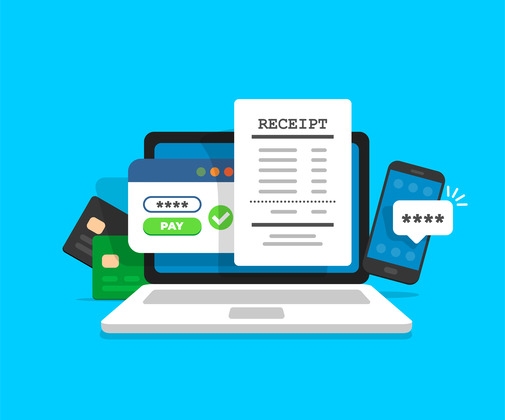How To Pay Yourself as a Small Business Owner

As a small business owner, you’ve poured your heart and soul into building your dream. But when it’s time to get paid, things can get tricky. Should you take a salary or opt for an owner’s draw? And how much can you pay yourself without jeopardizing your business’s financial health?
Here’s how to pay yourself as a small business owner. Learn about everything from different methods to sidestepping common pitfalls.
FROM ONE OF OUR PARTNERS — 5 Common Traits of Successful Small Business Owners
Owner’s Draw Versus Salary
When it comes to paying yourself as a small business owner, you have two main options: an owner’s draw or a salary. Each method has pros and cons for your business structure, taxes, and financial management.
An owner’s draw is a popular choice for many business structures, including sole proprietors, partnerships, and some LLC owners. It’s a flexible way to take money from your business’s value, allowing you to withdraw funds as needed. You don’t have to worry about keeping a schedule or taking out only a certain amount.
Corporations and some LLCs use salaries instead. With this method, you pay yourself a set amount regularly, with taxes coming out of each paycheck. This can make tax planning easier. Plus, salaries count as a business expense, which can lower your company’s tax burden.
RELATED ARTICLE — Small Business Tax Returns: Everything Business Owners Need To Know
Deciding How To Pay Yourself as a Small Business Owner: Key Factors
As a small business owner, you’re not just the boss. You’re also an employee. This dual role requires a thoughtful approach to compensation.
There’s no magic formula that works for everyone. The best way to pay yourself depends on your unique situation. If you’re feeling stumped, don’t hesitate to reach out to a financial advisor or accountant for help finding the best solution for you and your business.
Let’s explore the critical factors to make the best choice for both you and your business.
Business Structure
Are you flying solo as a sole proprietor? Part of a dynamic duo (or trio) in a partnership? Set up an LLC? For these situations, an owner’s draw might be your go-to. It’s flexible, letting you adjust your income based on how well your business is doing.
But if you run a corporation or an LLC that has chosen corporate tax status, the rules are different. In these cases, you’re required to put yourself on the payroll with a regular salary. This means a fixed income and different tax treatment compared to an owner’s draw.
Taxes
Understanding taxes’ impact can make a big difference in your take-home pay and your business’s bottom line. With an owner’s draw, you’ll settle up with the IRS when you file your personal tax return. Salaries, on the other hand, have taxes taken out of each paycheck, which makes tax season easier.
Here’s a pro tip for LLC owners: Consider having your business taxed as an S-corporation. This nifty strategy lets you pay yourself a reasonable salary and then take extra profits as distributions. It could save you money on self-employment taxes.
Cash Flow
Don’t forget to think about where your business is in its journey. If you’re just starting out, you might need to hold off on paying yourself until your cash flow is more predictable. Many small business owners funnel early profits back into the business to help it grow.
Personal Needs
Your personal bottom line should also play a role in how much you pay yourself. Your income should cover the essentials: your mortgage or rent, loans, and day-to-day living costs. Just be careful not to take too much. It’s about finding that sweet spot where both you and your business can thrive.
RELATED ARTICLE — The 8 Most Common Business Structure Types and How To Choose One
How Much To Pay Yourself as a Business Owner

How much should you actually put in your pocket each pay period? It depends. Let’s break it down.
Start by taking a good look at your business’s financial picture. Calculate your net profit by subtracting your operating expenses from total revenue. This includes costs like rent, utilities, supplies, and employee wages. This shows you how much you have available to pay yourself.
Net profit is your starting point, but it’s not the whole story. Here’s what else you should consider:
- Financial Health. Are your profits steady, or do they fluctuate? Do you have upcoming business expenses or investments to plan for? Make sure your business has enough to keep running.
- Taxes. Don’t forget about taxes and other liabilities. They can take out a bigger bite than you might expect.
- Personal Expenses. Think about your personal fixed costs (like your mortgage or rent) and variable expenses (like groceries or entertainment). You need to cover these while leaving some wiggle room for savings and unexpected costs.
So, what’s the magic number? A good rule of thumb is to pay yourself what’s reasonable for someone with your duties, considering your business’s complexity and the time you invest. Looking at average salaries on websites like Glassdoor and Indeed is a good place to start. This approach not only keeps you in the good graces of the IRS but also ensures you’re fairly compensated for your hard work.
Remember, finding the right balance takes time and might require some adjustments along the way. Don’t be afraid to revisit and revise your pay as your business grows and changes.
RELATED ARTICLE — How To Use Profitability Ratios To Improve Financial Performance
How To Pay Yourself From an LLC
If you’re running an LLC, your payment options depend on how you’ve chosen to be taxed. Let’s break down the rules:
LLCs Taxed as Sole Proprietorships or Partnerships
This is the go-to method for many LLC owners. You simply take money from your business profits as needed. It’s flexible, but remember: While you won’t pay taxes upfront, you’ll need to report this income on your personal tax return. Set aside some cash at least quarterly for tax day to avoid any surprises.
When it comes to taxes, single-member LLCs have it easy. The IRS treats you as a “disregarded entity,” similar to a sole proprietorship. That means your business profits flow directly to your personal tax return.
For multi-member LLCs, it’s a little different. You’re taxed like a partnership, with profits split and taxed based on each owner’s share of the business.
LLCs Taxed as Corporations
If your LLC is taxed as a corporation, you need to pay yourself a regular salary. This means a steady paycheck and payroll taxes withheld from each one. The IRS requires your small business owner salary to be “reasonable” for your industry and role, so do your homework on comparable positions.
Keep in mind that LLC tax rules can vary by state. It’s always a good idea to consult with a local tax professional to make sure you’re following all the right guidelines for your specific situation.
RELATED ARTICLE — Filing Business Taxes for LLC for the First Time: Everything You Need To Know
5 Tips for Avoiding Common Mistakes When Paying Yourself as a Business Owner

Paying yourself as a business owner is part art, part science, and a whole lot of careful planning. Here are five essential tips to keep your finances on track:
- Separate Your Finances. Don’t mix your personal and business accounts. This simplifies accounting, avoids confusion, and keeps visits from the IRS at bay.
- Stay Flexible. As your business grows, revisit your pay quarterly or semiannually. Your salary should reflect changes in profits and personal needs. What worked when you started might not keep working as your business evolves.
- Strike a Balance. Overpaying yourself can hurt your business’s cash flow. Underpaying yourself risks your personal financial security. Find the sweet spot that works for both you and your business.
- Plan for Taxes. If you’re taking an owner’s draw, remember that taxes aren’t deducted upfront. Set aside a portion of each payment monthly or quarterly to avoid a surprise bill come tax season.
- Automate. Use payroll services to streamline payments and tax filings. This reduces errors, keeps you from missing deadlines, and gives you more time to focus on growing your business.
FROM ONE OF OUR PARTNERS — How To Separate Your Personal and Business Expenses
Manage Your Finances With Invoice Simple
Balancing your pay with business expenses is key for working out a reasonable amount to pay yourself. Fortunately for your bottom line, tracking those expenses has never been easier.
Invoice Simple’s business expense and receipt tracker lets you scan any receipt and capture key info automatically. All of your expense data is ready to export into a summary report whenever you need it.
Start Your First
Invoice Today
Create customized and professional
invoices and connect with clients








